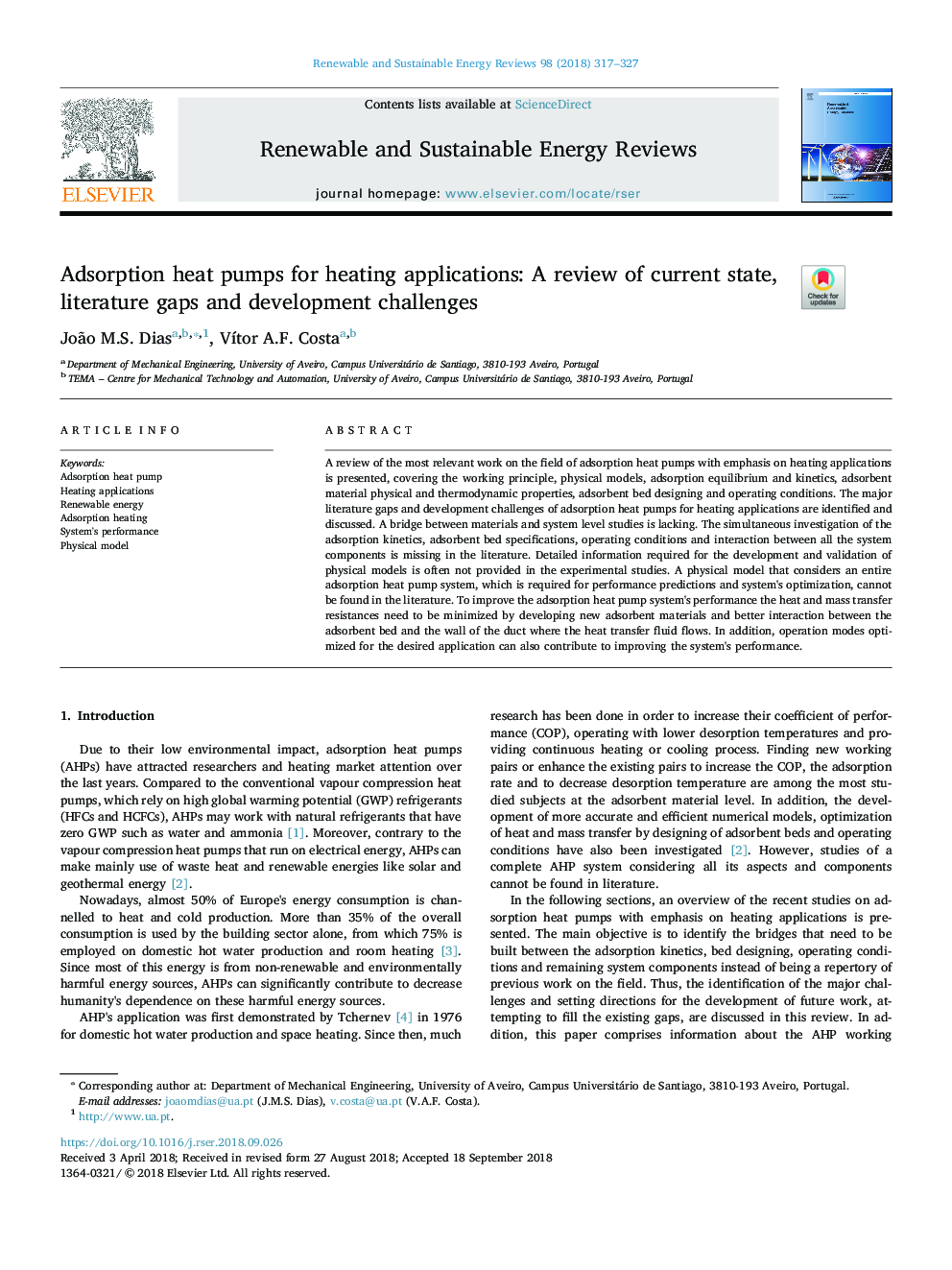| Article ID | Journal | Published Year | Pages | File Type |
|---|---|---|---|---|
| 11026392 | Renewable and Sustainable Energy Reviews | 2018 | 11 Pages |
Abstract
A review of the most relevant work on the field of adsorption heat pumps with emphasis on heating applications is presented, covering the working principle, physical models, adsorption equilibrium and kinetics, adsorbent material physical and thermodynamic properties, adsorbent bed designing and operating conditions. The major literature gaps and development challenges of adsorption heat pumps for heating applications are identified and discussed. A bridge between materials and system level studies is lacking. The simultaneous investigation of the adsorption kinetics, adsorbent bed specifications, operating conditions and interaction between all the system components is missing in the literature. Detailed information required for the development and validation of physical models is often not provided in the experimental studies. A physical model that considers an entire adsorption heat pump system, which is required for performance predictions and system's optimization, cannot be found in the literature. To improve the adsorption heat pump system's performance the heat and mass transfer resistances need to be minimized by developing new adsorbent materials and better interaction between the adsorbent bed and the wall of the duct where the heat transfer fluid flows. In addition, operation modes optimized for the desired application can also contribute to improving the system's performance.
Related Topics
Physical Sciences and Engineering
Energy
Renewable Energy, Sustainability and the Environment
Authors
João M.S. Dias, VÃtor A.F. Costa,
